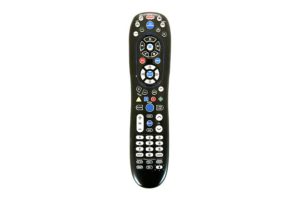Humans are intrinsically wired to think more = better. Doesn’t a fancy gadget with plenty of bells and whistles sound like it’s more advanced (i.e., better equipped to solve your problem) than an older, less technological solution?
Today, “simple” is often equated with “outdated.” Even modest kitchen appliances like coffee makers have mushroomed into espresso-delivering, milk-foaming, cappuccino-making mini-baristas. Why? Because more features makes for a more desirable product, apparently.
Admittedly, a broad feature set can improve a user’s experience with a tool. Cars that offer satellite radio and tv (as opposed to only a CD player) can clearly make a long car drive more tolerable; a smart phone that also acts as a GPS and video camera allows travelers to significantly lighten their loads. Product manufacturers constantly implement customer feature requests in the hopes that each new feature will make the product more appealing to users (and boost sales).
Too much of a good thing?
Yet, feature creep is the insidious dark side of this practice. Feature creep happens when product designers lose sight of why the product exists and begin to focus on “enhancing” it. In essence, they begin to move away from user-oriented features and begin adding capabilities that may or may not actually make solving a customer’s problem easier.
You may have one of these monstrosities at home:

These “universal remotes” control so many functions that learning how to master them takes a degree in computer science. While they can be great for people willing to spend a few hours reading the manual, the rest of us are just looking for something to change the channel, darn it!
David Pogue perfectly illustrated feature creep in his widely-watched TED Talk, “Simplicity Sells,” when he opened all the possible tools on Microsoft Word (at the time). The menu took up the entire screen.

How many people actually used all those tools? But they existed at one time because at some point, a product designer or engineer thought, “Hey, wouldn’t it be great for users to be able to do ‘X’?”
When users actually take advantage of that feature it’s great. We love spell-check and the ability to mark up documents. And, hey, sometimes you really need the ability to add a duck icon to your document (right?). But many of these capabilities go unused and largely ignored by Microsoft Word owners.
When feature creep turns ugly
Okay, so feature creep isn’t the greatest boon for users, but if you’re not using the features it’s not harmful, right? EHHH – buzzer sound. Wrong. Too many features can be destructive in a few ways:
- It can make it more difficult to make use of the product’s primary functions. Consider the universal remote. If you can’t figure out how to use any of the buttons to control your devices, it becomes an ugly paperweight. That whiz-bang all-in-one coffee/cappuccino/latte maker is nothing but a hunk of metal on your countertop if you can’t make a simple cup of coffee.
- Additional features can lead to more failures and increase the cost to fix them. The more components you add to a product, the more opportunities for breakdown you create. Cars today are run by computer systems. If, say, your air conditioner is malfunctioning, it may not be a simple, inexpensive fix like it would have been 20 years ago. Sometimes the problem is with the computer system itself, and if that needs to be replaced, you’re looking at a major hit to your wallet, whereas a simpler setup would not have resulted in the same outcome. Same thing goes for “smart home” technology. If your “smart” thermostat breaks, chances are it’ll be a lot more costly to fix than a basic model.
- Features cost money. In some cases this is fine—for those early adopters and ardent tech enthusiasts, paying more for some fancy gadgets wholeheartedly worth it. Yet, others wonder why it’s so hard to find a scaled back product that solves their problem for a minimal cost. As the arms race to build bigger and better gadgets escalates, it becomes more difficult for everyone to be able to afford life-enhancing products.
Affordable accessibility
Many accessibility tools on the market today have succumbed to the pressure to provide ever more robust and wide-ranging feature sets. They offer many capabilities that only a fraction of businesses worldwide will find helpful, let alone can afford.
What good is an accessibility solution that is out of reach for the majority of businesses? At TPGi, our goal is to make accessibility affordable and usable for everyone. That’s why we built ARC, an accessibility platform that includes tools and features that all businesses will be able to take advantage of, regardless of size or budget.
Not only that, but ARC’s usage- and seat-based plans allow a company to tackle accessibility problems commensurate with its resources to do so. Subscribers won’t get inundated by violations they have no capacity to remediate or acquire data that muddles the overall picture. With ARC, you pay for only what you need, and no more. How do you like that, Mr. Coffee/Latte/Espresso/Cappuccino/Frappuccino Maker?
Don’t support feature creep. Buy affordable products that solve your problem and include features you’ll actually use.
Try the ARC Platform at no cost today by registering for a FREE ARC account.
